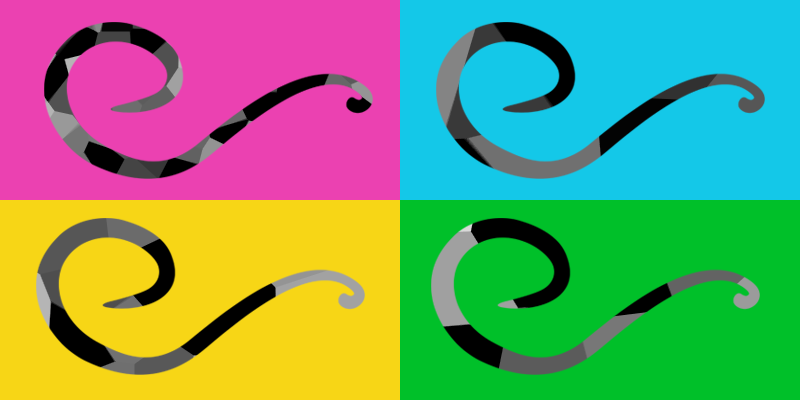This recap is a tad bit late- I’ve been meaning to write about my last conference visit. I was at the 20th International C. elegans meeting held at UCLA from June 24th-28th 2015. Below are the highlights of the meeting.
Disclaimer: This post is not meant to review all the fantastic science at the Worm Meeting. Here, I’ve merely tried to chronicle my experiences at the meeting.
The highlight of the first evening was hearing Jonathan Hodgkins, Marty Chalfie and Barbara Meyers talk about the evolution of their careers from their graduate student days. Their talks were interspersed with anecdotes and pictures from year’s past- lots of vintage hair-dos and fashion highlights! On a serious note, it was wonderful to hear the journeys of these fabulous scientists, their misgivings about their career options and how they simply let interesting questions guide their work. I wonder how much of this is viewing the past through rose-tinted glasses. But, all in all, it made for a great start to the meeting!
Day 2 started off sans coffee for me, a mistake which I quickly rectified! There were a number of interesting talks on aging and stress pertaining to dauer pathways. I attended an afternoon session pertaining to long term imaging of worms. This was probably one of my favorite sessions! We saw the power of the WorMotel (!!), a really cool PDMS multiwell plate, used for lifespan studies of worms on agar! There were also two really simple devices that could be easily fabricated and used for the study of worm behavior over a long periods of time- one of these consisted of agarose microchambers and the other consisted of a PEG-based hydrogel matrix. These were presented by Henrik Bringmann, MPI for Biophysical Chemistry, Gottingen and the Pincus group at Washington University, MO respectively.
That evening was also when I presented the PLab poster. Had some interesting discussions with people. A few blog visitors also dropped by! It was awesome to put a face to our e-visitors! I had meant to check out some posters that night, but hardly had a chance to step away from the poster to do so. I more than made up for this lack on Friday and Saturday!
Day 3 started off with another session on aging and stress. While there were numerous scientific highlights that morning, the talk that captured my attention was one by Jennifer Hewitt of the Vanapalli group at Texas Tech University, Lubbock, TX. They have a device called the NemaFlex that enables one to measure the neuromuscular strength of worms as they crawl through the matrix. Another really cool feature of this device is the ability to study adults exclusively without perturbing their reproductive abilities either pharmacologically or by genetic mutations, i.e., filter out larvae without the use of any sterility drugs or limiting studies to mutant sterile animals. I can’t wait to learn more about this device and its applications in a paper soon!
The highlight of the day was the Keynote address by Craig Mello. What I liked the most was the humility with which he spoke about his discoveries, as if all those discoveries just happened by chance, not by sheer brilliance and hard work. He painted quite the romantic picture of science- of it being larger than life and us being but witnesses to a small sliver of its amazing phenomena. His talk was peppered with amazing quotes, (all recorded on twitter for posterity, simply search through #worm15). The day was wrapped up with the poster session and some much needed catching up with my former colleagues!
On Day 4, I attended a really interesting workshop chaired by Andre Brown, Imperial College of London, on Worm Tracking. All the cool kids of the tracking world were up there in the panel and spoke about their respective devices and advances in phenotyping of worms. I especially liked the one by Weiwei Zhong of Rice University! The discussion that ensued after, focused on whether a streamlined solution could be arrived at to bridge the (coding and tech support) gap for novice users. My personal favorite is the creation of a non profit (or heavily subsidized) centralized resource that can maintain, support and troubleshoot these open source solutions for the benefit of the growing worm researcher community! This would enable so many more worm users to embrace faster, reproducible ways of phenotyping as well as enable validation of developed software in the hands of the many. Hopefully, the worm community can band together to come up with a way to maintain this knowledge resource!
That evening, apart from posters, I also had the opportunity to demo a really cool device from NemaMetrix- a microfluidic device that enables the measurement of pharyngeal pumping frequencies in real time! It was super cool to see the worm being funneled into the chip, see the pumping behavior and watch the trace record on an iPad! The potential for drug screening with devices like these is endless! I hope we’re able to try one soon! Finally, that evening we attended the most-awaited event at every worm meeting- The Worm Variety Show hosted by Morris Maduro and Curtis Loer of UC, Riverside. Every worm meeting, Morris and Curtis put together a show consisting of audience reactions, music parodies, video contributions, it’s like being in nerd heaven! Each time it surpasses the last, this time was no different. I’ll let you judge for yourself:
The last day of the meeting had a session on advances in CRISPR transgenic methods. A number of groups shared their tricks of the trade, secrets to a successful CRISPR’d animal each time! Dan Dickinson’s approach was particularly elegant, you can read about it here.
And just like that, the meeting came to an end. Four days of amazing open science and ‘nerd’-vana. I can’t wait to go back to the next one! And hopefully, two years from now, we will see more companies in the nematode research space!


